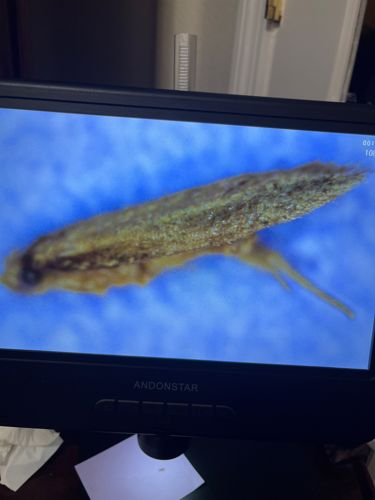Bagworm Moth Larva (Bagworm)
Scientific Name: Psychidae (Family)
Order & Family: Lepidoptera (Order), Psychidae (Family)
Size: Larval cases can range from 1 to 7 cm (0.4 to 2.8 inches) in length, depending on the species and larval stage.

Natural Habitat
Found on trees and shrubs in various environments, including forests, orchards, and urban landscapes. The larva constructs and lives within a silken case covered with plant material.
Diet & Feeding
Herbivorous. Bagworm larvae feed on the foliage of a wide variety of trees and shrubs, including evergreens like arborvitae, juniper, and cedar, as well as deciduous trees like maple and oak.
Behavior Patterns
The most distinctive behavior is the construction of a protective case made of silk and camouflaged with bits of leaves, twigs, and other debris. The larva carries this case everywhere it goes, enlarging it as it grows. They are slow-moving and remain within their cases, only protruding their heads and legs to feed and move. Pupation occurs inside this case. Adult males are winged and short-lived, while adult females are often wingless and remain inside or close to their larval cases to lay eggs.
Risks & Benefits
Risks: Bagworms can be significant defoliators of ornamental trees and shrubs, especially evergreens. Severe infestations can lead to extensive damage and even plant death. Benefits: In natural ecosystems, they are part of the food chain, serving as a food source for birds and parasitic insects. However, their primary impact in human-dominated landscapes is considered a pest.
Identified on: 9/15/2025